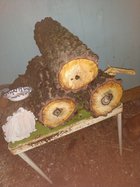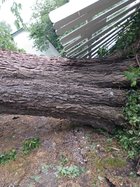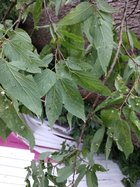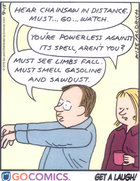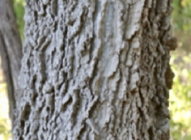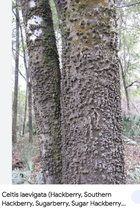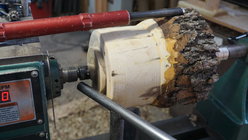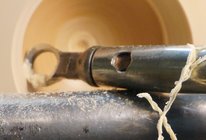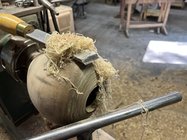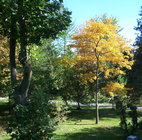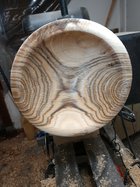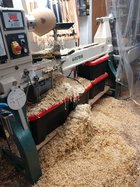I know was turned end grain and the bark was left on all the way around the sides. Think ultimate dog dish. Wonder how bad this would check if I did something like that? How would I go about turning the end grain?
Endgrain forms with curves and fairly thin walls rarely crack.
A flat bottomed endgrain bowl is prone to cracking
Consider turning something like this holly vase my wife did. Bark edge and elegant
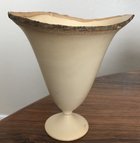
Try something small first like this unsanded oak goblet
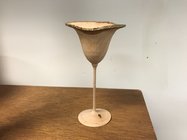
Jimmy Clewes does an excellent demo on the vase.
Rudy Lopez does a great demo on the goblet.
Basic steps
select a blank with the pith off center just enough to be outside the stem. (Stem will break easily if the pith is in it)
Mount the limb between centers, establish the rim leaving it a little thick, hollow and sand the opening,
Turn the outside of the goblet or vase to thickness ( a light helps here should work with your darker wood)
Sand the outside of the cup
For a thin stem Use tailstock support. I have rubber chuckies that fit goblets. You can use a small rubber ball or wadded paper towel inside the goblet and bring the tailstock up you don’t want any pressure just want to keep the cup on center and not whipping around
Turn the stem turn the top of the base. Sanding as you go down the stem
Part of the base. I use a parting tool sharpened at an angle with the point toward the stem. This undercuts and keep the base an even thickness.
Let it dry 2-3 days then finish.
Hollowing can be done with a variety of tools, termite, Hunter carbides Monroe hollower, hook tool, gouges,
Choice depend on what you have and what you know how to use well.
The Hunter tools are probably the easiest to learn.
@Don Wattenhofer does a lot of similar pieces
See his thread
https://www.aawforum.org/community/threads/green-goblet-turning.17583/